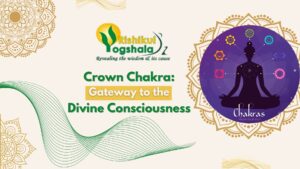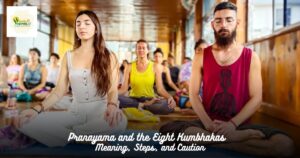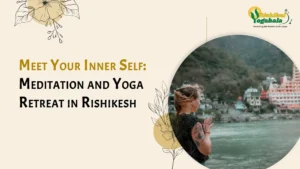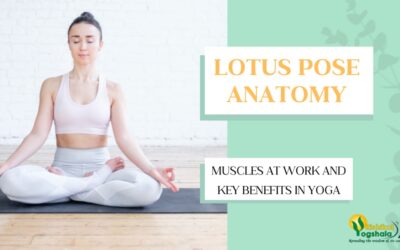In this fast-paced world, keeping yourself healthy is a challenging task, especially when you’re unfit or facing medical challenges. However, the daily practice of yoga can help you make it possible. Yoga is a gratifying practice that can benefit you in many ways. It can help you to overcome anxiety, reduce specific pain, control sugar, cholesterol and PCOS-like women’s problems. Although learning yoga is not a one-day task, it requires some effort and learning foundational yoga poses to practise it further. One of the renowned foundational yoga poses is the hero pose, which is also known as veerasana. According to ancient Indian documents, veera means hero, and asana means pose.
This is a fundamental seated yoga pose that has many mental and physical advantages. Despite its apparent simplicity, this pose has deep meaning in yoga tradition and can serve as a springboard for more in-depth mindfulness and meditation. This article will cover all the essential information regarding Veerasana, including its advantages, proper technique, who should avoid it and adjustments for different skill levels. Knowing and using Veerasana can improve your yoga practice regardless of your level of experience.
What is Veerasana (Hero Pose)?

According to yoga philosophy, Veerasana represents inner strength, self-control and preparedness qualities that are associated with a spiritual warrior. The seated position demonstrates self-control and humility enabling the practitioner to develop courage through stillness and mindfulness rather than action. In many old texts, including the Hatha Yoga Pradipika, Veerasana is mentioned as one of the most important seated positions for extended meditation and breath control.
The practitioner of Veerasana sits back between their heels, knees bent, and toes pointing backwards. In Veerasana, the hips drop to the floor or a prop between the feet, in contrast to Vajrasana (thunderbolt pose), where you sit directly on your heels. In a yoga sequence, this pose is frequently used for cool-downs, pranayama (breathing techniques) and meditation. It encourages a feeling of stillness, serenity and grounding. Philosophical and historical relevance.
How to Practice Veerasana (Step-by-Step Guide)

The following are the guided steps to carefully practice Veerasana Pose:
Step 1: Find A Space
- Choose a peaceful, clean spot where you can sit without being bothered and use a folded blanket or yoga mat for comfort.
Step 2: Begin in a Kneeling Position
- Your thighs should be perpendicular to the floor when you get on your knees.
- Keep your hips hip-width apart or your knees together, depending on your degree of flexibility.
Step 3: Position Your Feet
- The tops of your feet should be flat on the floor, and they should be slightly wider than your hips.
- Make sure that instead of splaying out to the sides, your big toes are pointed directly back.
Also Read: Prasarita Padottanasana: Benefits, Modifications and Variations
Step 4: Sit Between Your Heels
- Lower your hips slowly until your buttocks are between your heels on the floor.
- If sitting directly on the floor hurts, place a folded blanket, yoga block or bolster beneath your hips.
Step 5: Align Your Spine
- With your shoulders relaxed and your spine straight, sit up straight.
- Put your hands in a mudra (e. g. on your thighs). A. when meditating (Gyan Mudra).
Step 6: Breathe and Hold
- Inhale evenly and deeply through your nose.
- Increase the duration of the pose to one to five minutes as you get more comfortable doing it.
Key Alignment Tips
Here are some Key alignment tips to avoid a mishap:
- It shouldn’t feel like knee strain. If so, use a prop
- You should align your feet. Don’t let the inner ankles spread out
- Maintain a straight back. Avoid slouching or arching your lower back
- Get the core involved. This gives the pose balance and support
Modifications and Props
Beginner Tips:
- While practicing Veerasana must sit on a folded blanket or a proper yoga mat to avoid the chances of pressure occurrence on knees and ankles
- If the top of your feet feels tight, place a rolled towel under your ankles
For Tight Hips or Knees:
- Sit on two blocks that have been stacked between the heels
- Under the knees, place cushions for extra support
Advanced Variation:
Returning to Supta Veerasana (Reclined Hero Pose) for a deeper stretch and relaxation is an option if you feel at ease in Veerasana.
Benefits of Veerasana (Hero Pose)

Veerasana offers a wide range of mental, physical and emotional benefits, making it an ideal posture for all levels of practitioners.
1. Improves Posture
Slouching is less likely when sitting in Veerasana because it engages the core muscles and promotes an upright spine.
2. Enhances Digestion
After meals, this pose is frequently advised by the yoga instructors because it promotes digestion and lessens bloating-like problems.
3. Strengthens Knees and Ankles
Maintaining joint health through regular practice increases lower limb strength and flexibility.
4. Calms the Mind
For pranayama and meditation, Veerasana is perfect. It encourages relaxation and stress reduction.
5. Relieves Leg Fatigue
Veerasana helps people who stand for extended periods of time by promoting circulation and relieving tired legs.
6. Aids in Meditation Practice
It is a recommended sitting position for dhyana (meditation) because of its stability and symmetry, which allows you to sit comfortably for extended periods of time.
Contraindications and Precautions
Practicing Veerasana is usually safe; however, it must be avoided or modified under certain conditions:
Avoid or use some Caution If you’re experiencing these conditions:
- Recent specific surgery or injury in knee and back
- Suffering with ankle issues
- Experiencing arthritis problems in the lower body parts
- In the early stages of Pregnancy
Also Read: Uttanpadasana (Raised Legs Pose): Steps, Benefits & Contradictions
Note: Before going for the move, you must consult a yoga teacher or healthcare provider if you have any concerns or physical limitations.
When to Practice Veerasana
Following are the best times to practise Veerasana pose:
- Practicing Veerasana after a meal can aid in your better digestion, unlike many other yoga asanas
- It will also help while breathing exercises and meditation in the morning session
- The yoga pose assists in regaining mental clarity and boosting nervous systems recovery while practicing in morning and evening
- It can promote mental clarity and avoid drowsiness, so avoid doing it right before bedtime
Incorporating Veerasana into Your Yoga Practice

To take more advantage of the hero pose, you must incorporate it in daily life:
Sample Routine:
- Before diving into this yoga pose, begin with a few warm-up sessions of cow-cat poses that are beneficial for achieving flexibility
- After that, spend 5 to 6 minutes in Veerasana pose
- While staying in the pose, concentrate on your breathwork or practise either Ujjayi Pranayama or Nadi Shodhana
- Veerasana can be used as a foundation for mantra chanting or meditation
- Once the Veerasa session is done, end with Savasana for some light stretching or relaxation
Conclusion
More than just a sitting position Veerasana, Hero Pose is a time of strength, stillness and introspection. You develop inner courage, increase your flexibility and align your body for calmer, deeper breathing as you ground yourself in this meditative pose. Veerasana turns into a holy pause in the path of self-discovery, a place where inner peace and warrior meet.
Veerasana is more than just a pose, and if you are keen to learn about Veerasana, then you can join our 200 Hour Yoga TTC in Rishikesh at Rishikul Yogshala Rishikesh. It’s a first step toward self-discipline and metamorphosis. In a traditional, encouraging environment under the guidance of skilled instructors, you will discover how this fundamental pose enhances teaching methods and meditation. If you’re planning to advance your practice and earn your certification as a yoga instructor, this is the way to go. Enrol in the 200 hour yoga TTC offered by Rishikul Yogshala to learn how Veerasana can help you connect with your inner strength, purpose and yoga’s fundamental principles.















